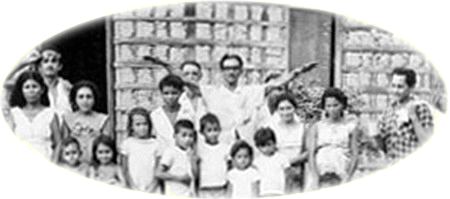
Mestre Gabriel Founder (recreator) of the UDV
***
Run to where there is shadow,
Ask to whom has to give,
Don’t ask to whom never had,
Even if he had, he doesn’t give.
It is the superior strength
In which we should ask for:
Give me strength,
Give me light; give me the divine love.
Give me patience; give me the divine love.
Give me obedience; give me the divine love.
Give me perfect health; give me the divine love.
A UDV chamada by Master Gabriel (translated from Portuguese)
Demystifying the UDV – by Joey McGolrick
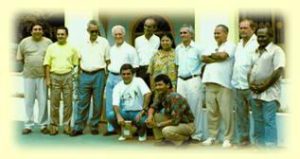
Twelve Original Disciples of Mastre Gabriel
The Uniao do Vegetal (UDV)
The UDV teaches a path of Light, Peace and Love. Connected with this core teaching is a body of knowledge and instruction given to those disciples who demonstrate a ‘memory’ of this knowledge (based on their previous incarnations and degree of merit). Those disciples that demonstrate this ‘memory’, through their questions or demonstrate their commitment through their duty and works are invited into the ‘instructive body’ where higher teachings are given. The Language and teachings of the doctrine of the UDV are given in (and only) Brazilian Portuguese, which is (the language) extremely important within the UDV. Without an understanding of this language, disciples cannot advance to the higher teachings of Mestre Gabriel and the UDV. It is therefore, a necessary requirement to learn Brazilian Portuguese if a disciple is to understand the particular teachings of the UDV.
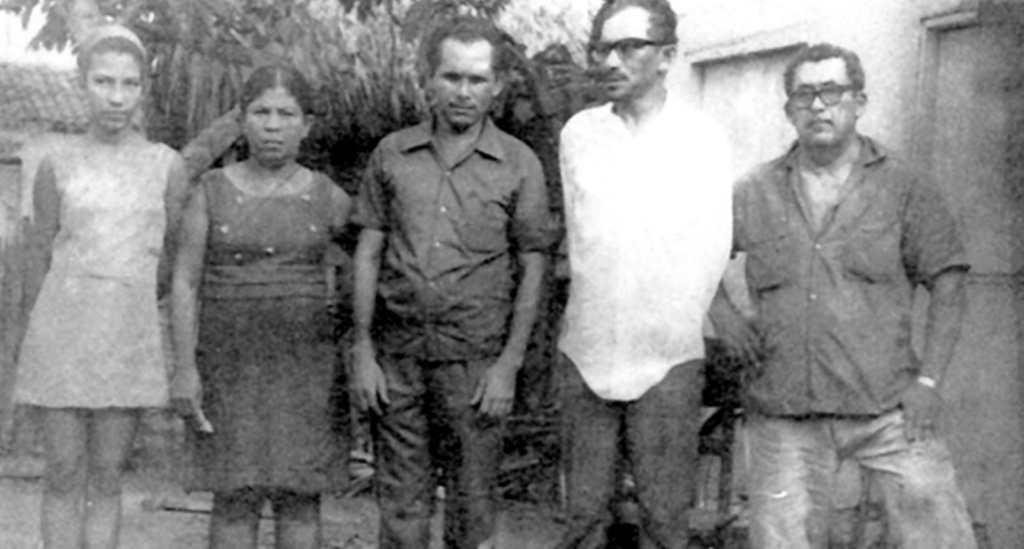
Mastre Gabriel
- José Gabriel da Costa was born on February 10, 1922, in the municipality of Coração de Maria, near the city of Feira de Santana, Bahia (BA).
- In 1944, he enlisted as a “rubber soldier”. He travels by ship from Salvador (BA) to Belém (PA) and from there goes to Porto Velho (Federal Territory of Guaporé).
- From 1944 to 1946, he was a rubber tapper in the Bom Futuro and Triunfo rubber plantations. Back in Porto Velho, he worked with the supply of firewood for the Madeira Mamoré Railway and, later, at the São José Hospital in Porto Velho, as a nursing assistant.
- In 1947, he met Raimunda Ferreira da Costa, called “Pequenina”, and married her.
- Between 1950 and 1958, from Porto Velho he went to the rubber plantations with his family, living for a period in the Territory of Guaporé, current state of Rondônia, and returning to the capital. He made this journey a few times, without having the opportunity to visit Chá Hoasca.
- From 1959 to 1964, Mestre Gabriel lived in the Guarapari and Sunta Seringais, on the Bolivian banks of the Abunã River, on the borders with Acre. In April 1959, he had his first contact with the Hoasca Tea, which was distributed to people, without defined ritual or doctrine. He then began his purpose of using tea in a beneficial and orderly manner.
- On July 22, 1961, he declared the União do Vegetal created, with his wife “Pequenina”, his children and some rubber tappers present. He continues to distribute the tea, already within a ritual and a doctrine.
- In January 1965, Mestre Gabriel and his family moved to Porto Velho (RO), where the UDV first organized itself as the União do Vegetal Beneficent Association and in 1970 as the União do Vegetal Beneficent Spiritist Center, installing its first Headquarters. on Abunã Street.
- On September 24, 1971, he dies in Brasília (DF).
Mestre Gabriel vivia com sua família de forma simples, trabalhava como seringueiro na região entre o Acre e a Bolívia e depois mudou-se para Porto Velho (RO). Antes de criar a União do Vegetal, apresentava-se como Sultão das Matas em terreiros de macumba e era conhecido na região. Nesses caminhos, fez amigos que foram os primeiros discípulos, mestres e conselheiros da União do Vegetal. Eram, na maioria, pessoas simples, trabalhadores dos mais diversos ofícios, de reduzido poder econômico, como ele, e que compreenderam a sincera mensagem espiritual da UDV.
Mestre Gabriel respondeu a todas as perguntas que lhe foram feitas sobre a vida espiritual, nas sessões e no dia-a-dia, no convívio com seus discípulos. Respondia de forma simples, fácil de entender. Mostrava os mistérios das palavras, estimulando a “martelar a memória”. “A palavra é que traz tudo pro homem”. Com afirmativas simples como esta, Mestre Gabriel conquistou a atenção de seus discípulos.
Com seu jeito caboclo, que é a forma simples do sertanejo, Mestre Gabriel falava, e agia ensinando a fazer uma ligação com Deus. Usando símbolos da natureza e exemplos da vida, tocava o sentimento das pessoas mostrando as belezas espirituais.
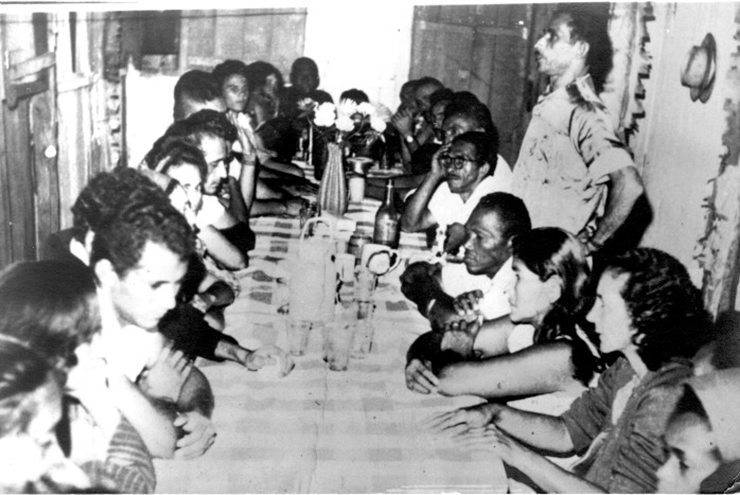
UDV TeachingsThe UDV teaches a path of Light, Peace and Love. Connected with this core teaching is a body of knowledge and instruction given to those disciples who demonstrate a ‘memory’ of this knowledge (based on their previous incarnations and degree of merit).
Those disciples that demonstrate this ‘memory’, through their questions or demonstrate their commitment through their duty and works are invited into the ‘instructive body’ where higher teachings are given.
Language and teachings of the doctrine of the UDV are given in (and only) Brazilian Portuguese, which is (the language) extremely important within the UDV. Without an understanding of this language, disciples cannot advance to the higher teachings of Mestre Gabriel and the UDV. It is therefore a necessary requirement to learn Brazilian Portuguese if a disciple is to understand the particular teachings of the UDV.
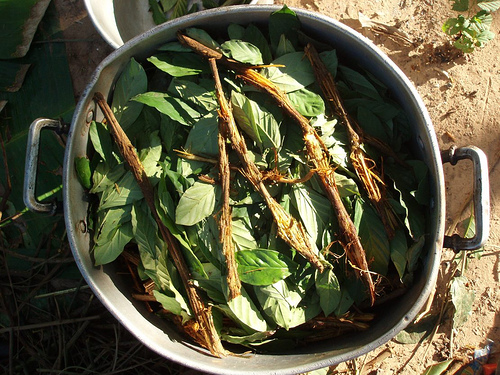
The tea Hoasca taken is made from two sources. One is a vine, Chacrona and the other is a leaf, Mariri. The growing, acquisition, harvesting and preparing of this tea is the central function of the centers or Nucleos. These centers or temples are the principal social structures for the gathering of disciples. The temples are the primary places where the tea is taken in ceremonial sessions. The purpose of these sessions is to receive the ‘illumination’ and the teachings of the UDV and Mestre Gabriel.
Myths of Origin
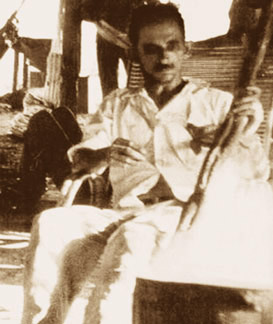
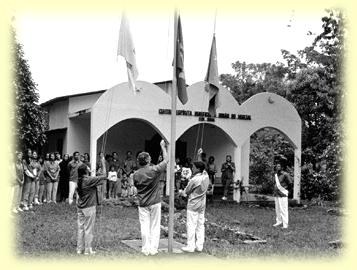
One might suppose that the mythology of the UDV would have been inspired by one of the Indian groups inhabiting Brazil’s western frontiers. This does not appear to be the case, however, and the identifiable elements would suggest rather that the UDV acquired its esoteric lore form contacts with mestizo Peruvians and Bolivians. Three principal figures appear in UDV mythology:
King Solomon: “Salomão… o Rei… o Imperador” [“Solomon… the King… The Emperor”]
Tihuaco: “É o Marechal… a força… o mariri” [“He is the Marshal… the strength… the mariri”] [mariri is the name of the Banisteriopsis caapi vine]
Mestre Caiano: “O In-Caiano… a reencarnação do Rei Inca… o primeiro oasqueiro” [“The In-Caiano…the reincarnation of the Inca King… the first oasca drinker”]
Solomon points to the Old Testament and Christian element in mestizo folklore, while Tihuaco and the reference to the Inca suggests an inclusion of highland Quechua elements absent in Brazil, but widely distributed across the border. The relationship between these three figures is complex. King Solomon is generally credited with providing the mystical “key” to the use of the hallucinogenic drink. He did this twice, at least: once to the mythical hero Mestre Caiano, the reincarnated Inca King, and once to the historical figure of Mestre Gabriel, who is seen not as the creator but as the recreator of the UDV – an esoteric group which had already existed in mythical times, when it was led by Mestre Caiano. At the beginning of a drinking session, therefore, it is the spirit of Mestre Caiano who is called, as a guide to the state of awareness produced by the drug.
The teachings of the UDV and Mestre Gabriel revealed in these regularly scheduled (escala) sessions are given through the Mestre (teacher) conducting the session. In the sessions, the churches documents are read and then chamadas (calls) are made to bring in the guiding forces that are the guardians of the light. The calls are made by the Mestre to invite or invoke forces associated with Hoasca into the session. These forces guide (work with the energy circulating within the session) and direct the disciple if their ‘concentration’ is strong, to higher sources of knowledge. If not the light and force of the tea will ‘purify’ and ‘cleanse’ the disciple, mostly in terms of ‘throwing up’, called a ‘payment’. The conducting Mestre is the link to the ‘Superior Mestre’ and it is up to this Mestre to provide this connection. Disciples are not oriented in any way other than the outwardly social structure. Once the tea is taken the disciple is left between his or her own inner psyche and the mysterious qualities of the tea.
If the disciple is true to the UDV, he or she must understand that this path is a total path and once the disciple understands this, they will know that it is their one and only path to God. This path is not shared by any other teachings. It is a complete path within itself.
Disciples who drink the tea and do not have this understanding are drinking the tea for ‘other’ or ‘lesser’ reasons, or they have not developed this ‘higher’ understanding because of their particular ‘merit’ and therefore must seek this higher understanding.
Limitations
It is of course clear, drinking a ‘sacrament’ can be useful and instructive. It is also more evidential clear that to ‘maintain’, ‘keep’ and develop the ‘insights’ received one must continue to drink the tea. This is because the ‘illumination’ is NOT ones true and natural state of consciousness. The tea is required and that is a limitation. It is conditional. The ‘realization’ although ‘illuminating’, does not remain and therefore one is ‘required’ to return ‘once again’ and ‘reunite’ with the tea, regularly. This therefore, is a ‘way of life’ and one must maintain their connection to the ‘source’ of UDV if any benefit is to be ‘kept’.
The teachings and knowledge base of the UDV is very limited in terms of the larger body of religious and spiritual teachings in the traditions of the world. It is considered by some to be a fourth to fifth stage teaching and therefore limited in its full scope of understanding to the Full Breath of Illumination. To see more on the limits of a fourth to fifth stage teaching see The Seven Stages of Life. The UDV because of its limited ‘universal’ understanding and ‘superior astral’ seat considers itself ‘superior’ and therefore exclusive and limiting to others. They have a dualistic understanding of the cosmos – inferior and superior forces – and therefore are excessively ‘upward’ and ‘ascended’ in their orientation towards the Divine.
Deception
“As long as you regard yourself or any part of your experience as the “dream come true,” then you are involved in self-deception. Self-deception seems always to depend upon the dream world, because you would like to see what you have not yet seen, rather that what you are now seeing. You will not accept that whatever is here now is what is, nor are you willing to go on with the situation as it is. Thus, self-deception always manifests itself in terms of trying to create or recreate a dream world, the nostalgia of the dream experience. And the opposite of self-deception is just working with the facts of life.”
Chögyam Trungpa, Cutting Through Spiritual Materialism.
If you would like more information about the Uniao do Vegetal Church please go to their North American webpage at: http://udvusa.org/
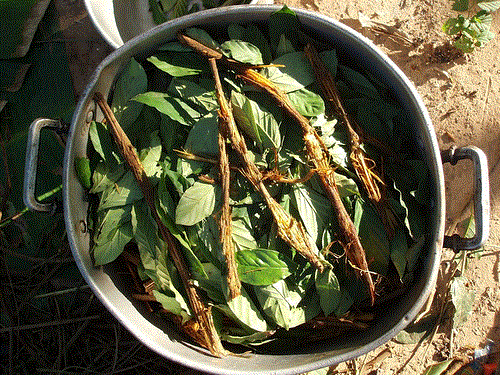
“The more you go inside…., the more things are seen. And you also see our past and our future, which are there together as a single thing already achieved, already happened . . .I knew and saw God…the entire universe…
Maria Sabina describes access to the timeless eternal visionary realm
“One of the proofs that it is ‘Jesus Christ himself’ who talks to them is that anyone who eats the mushroom sees visions. Everyone we have asked suggests that they are seeing into heaven itself. … Not all Mazatecs believe that the mushroom messages are from Jesus Christ … Most monolinguals however will either declare that it is Jesus Christ who speaks to them, or they will ask a little doubting ‘What do you say, it is true that
it is the blood of Jesus’?” (Mushroom Ceremony – Smithsonian Institute).
Eunice Pike noted to Wasson in 1953
“Throughout history human beings have been looking for something to sustain them. Everything from Jesus to Amanita muscaria, the sacred mushroom, is claimed to be the panacea, the sustainer” -Adi Da Samraj – Read More
“He used to say that it was the top of the spiritual axis of the earth; there must he said,
be another mountain corresponding to Arunachala exactly at the opposite side of the globe the corresponding pole of the axis.”
Major Chadwick – Devotee of Ramana Maharshi – Read More
“As long as you regard yourself or any part of your experience as the “dream come true,” then you are involved in self-deception. Self-deception seems always to depend upon the dream world, because you would like to see what you have not yet seen, rather that what you are now seeing. You will not accept that whatever is here now is what is, nor are you willing to go on with the situation as it is. Thus, self-deception always manifests itself in terms of trying to create or recreate a dream world, the nostalgia of the dream experience. And the opposite of self-deception is just working with the facts of life.
Chögyam Trungpa, Cutting Through Spiritual Materialism.
For a fuller look at the history and teachings of the UVD see:
Ayahuasca Use in a Religious Context
The Case of the União do Vegetal in Brazil by Anthony Richard Henman, Feb 2009
Adapted from a 1985 paper presented at the 45th Congresso Internacional de Americanistas.